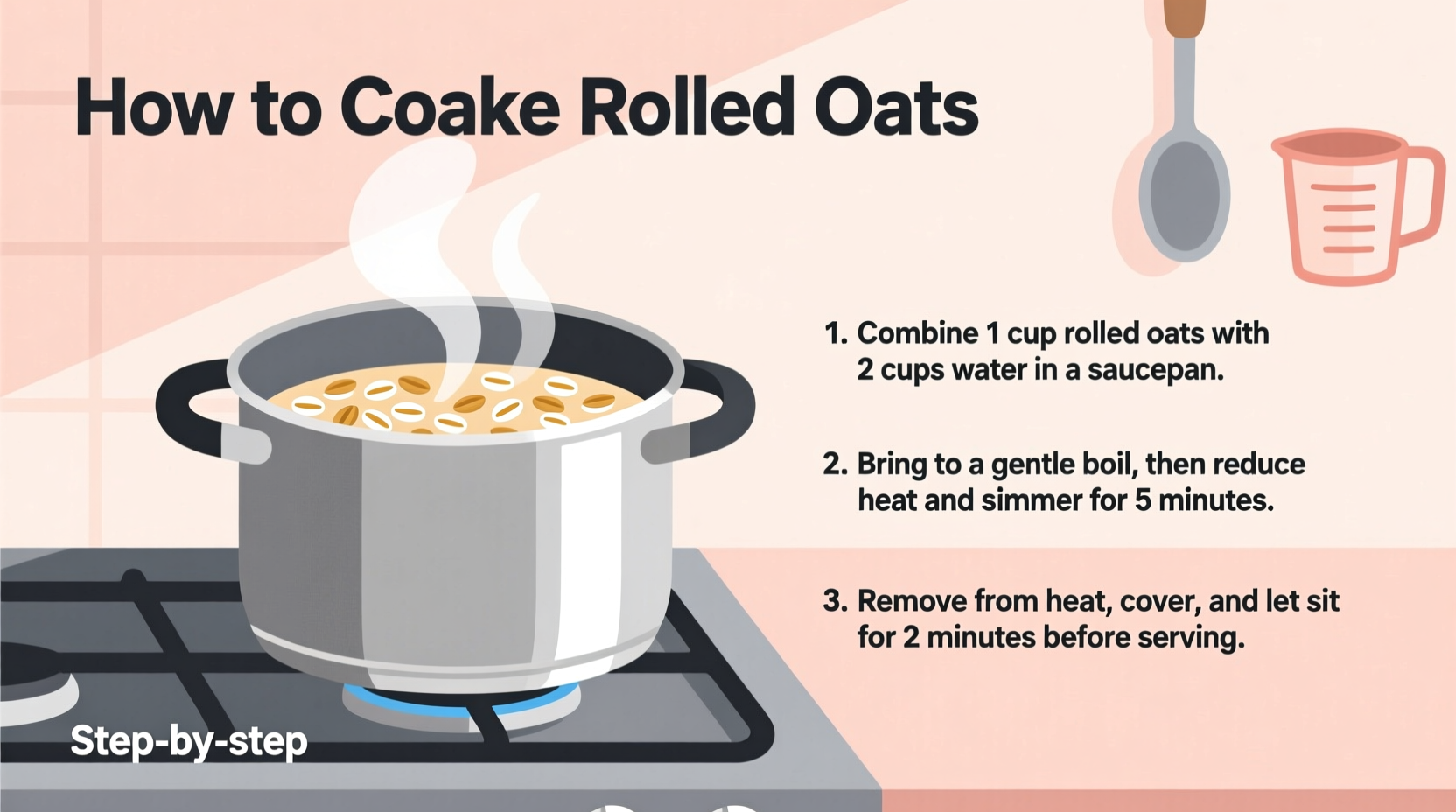
Why Rolled Oats Deserve Your Attention
Unlike instant varieties, rolled oats retain more fiber and nutrients while offering that satisfying chewy texture professional chefs prize. According to the USDA FoodData Central, one cup of cooked rolled oats delivers 4 grams of fiber and 6 grams of protein—making them a nutritionally superior breakfast choice compared to processed alternatives.
| Oat Type | Processing Method | Cooking Time | Nutritional Advantage |
|---|---|---|---|
| Steel-Cut | Chopped whole groats | 20-30 minutes | Highest fiber content |
| Rolled Oats | Steamed and flattened | 5-7 minutes | Best balance of nutrition and convenience |
| Quick Oats | Pre-cooked and rolled thinner | 1-3 minutes | Most convenient but less fiber |
Stovetop Method: The Professional Standard
Chefs prefer the stovetop method for complete control over texture. Here's the exact technique:
- Measure 1 cup (80g) rolled oats and 2 cups (480ml) liquid (water, milk, or combination)
- Bring liquid to gentle simmer in a 2-quart saucepan
- Stir in oats and reduce heat to medium-low
- Cook for 5-7 minutes, stirring occasionally
- Remove from heat and let rest covered for 2 minutes
- Add salt to taste (1/8 teaspoon enhances flavor without making it salty)
This method for how to cook rolled oats on stove prevents the common mistake of boiling too vigorously, which breaks down the oats' structure and creates unpleasant stickiness. The resting period allows residual heat to complete the cooking process without over-thickening.
Alternative Cooking Methods for Different Situations
Understanding rolled oats cooking time variations helps you adapt to your morning routine:
Morning Rush? Microwave Method
Combine 1/2 cup oats with 1 cup liquid in a microwave-safe bowl. Microwave on high for 2 minutes, stir, then microwave 1-2 more minutes. Let stand 2 minutes. This quick rolled oats microwave recipe works when you have exactly 5 minutes.
Prep Ahead? Overnight Method
For no-cook convenience: Mix 1/2 cup oats with 2/3 cup milk or water and refrigerate overnight. In the morning, the oats will be perfectly softened. Add fresh fruit and nuts just before eating. This overnight rolled oats preparation maintains maximum nutrient retention.
Avoiding Common Rolled Oats Mistakes
Even experienced cooks make these errors when preparing how to make rolled oats creamy:
- Wrong ratio: Too little liquid creates gluey texture; too much makes porridge watery. Stick to 2:1 liquid-to-oats
- High heat: Causes scorching and uneven cooking. Medium-low is essential
- Over-stirring: Breaks down oats' structure. Stir only occasionally
- Skipping salt: A pinch enhances natural flavor without making it salty
Flavor Variations That Transform Basic Oats
Professional chefs build flavor in three stages for the best way to cook rolled oats:
During Cooking
- Add cinnamon stick or vanilla bean to the cooking liquid
- Include a pinch of sea salt for flavor enhancement
Immediately After Cooking
- Stir in 1 teaspoon of honey or maple syrup while hot
- Add 1 tablespoon of chia seeds for extra nutrition
Before Serving
- Fresh berries and sliced bananas
- Chopped nuts for crunch and healthy fats
- A dollop of Greek yogurt for protein boost
Storage and Reheating Guidelines
Cooked rolled oats keep well for meal prep. Store in airtight containers in the refrigerator for up to 5 days. When reheating rolled oats storage techniques, add 1-2 tablespoons of liquid per serving to restore creaminess. Never microwave dry oats—they'll become tough and chewy.
Nutritional Benefits Worth Noting
The Academy of Nutrition and Dietetics confirms that regularly consuming healthy rolled oats breakfast recipes provides significant health benefits. The beta-glucan fiber in rolled oats helps maintain healthy cholesterol levels and provides sustained energy release—making them superior to processed breakfast alternatives.











 浙公网安备
33010002000092号
浙公网安备
33010002000092号 浙B2-20120091-4
浙B2-20120091-4